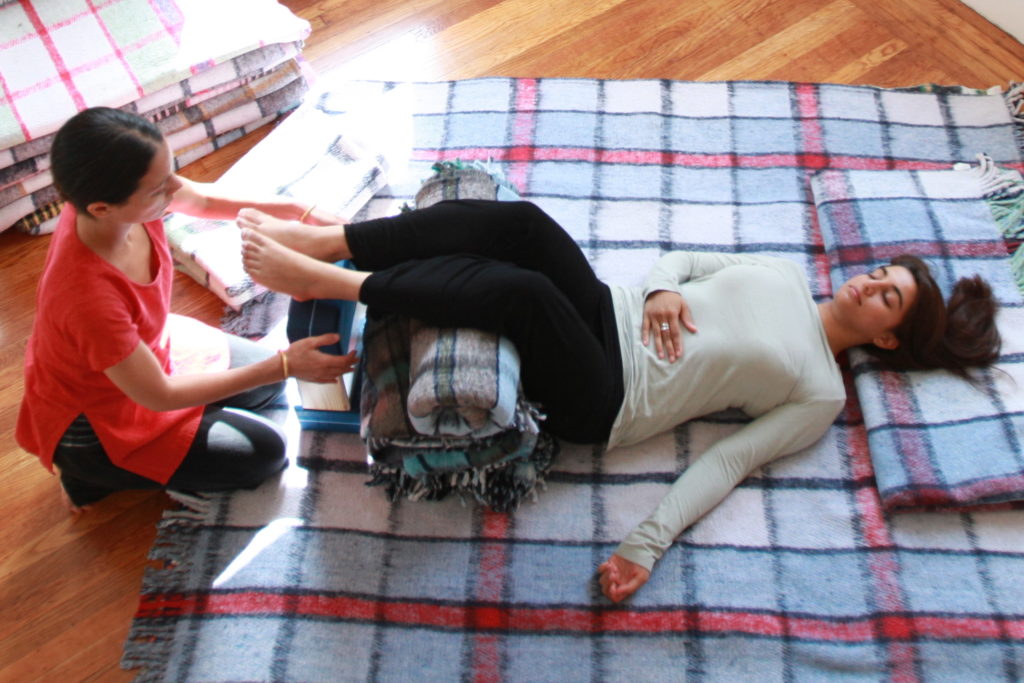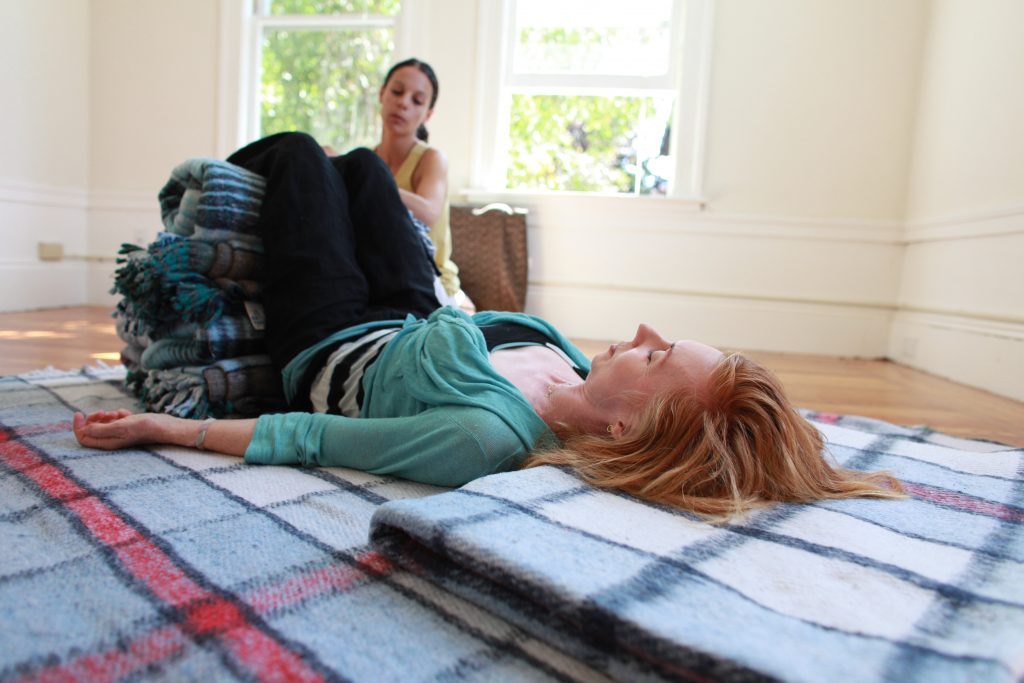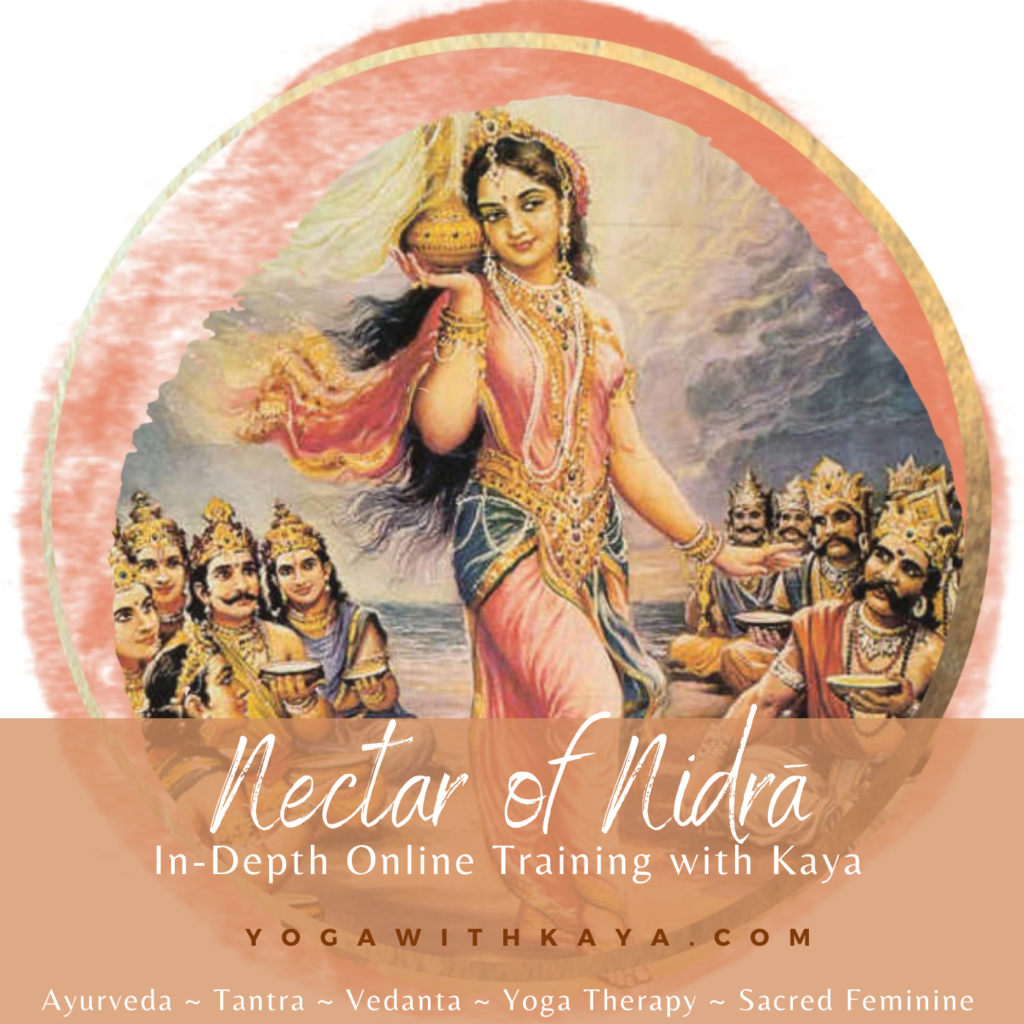“Lying flat on the ground with the face upwards, in the manner of a dead body, is Shavāsana. It removes tiredness and enables the mind [and whole body] to relax.”
Hatha Yoga Pradipika

How to Say & Write “Śavāsana”
The word is śava [corpse] + āsana. If you don’t have the usage of diacritical marks to delineate Sanskrit words in English, the best way to write it is shavasana. The “Śa” sound is like the English “shut”. The second “ā” sound is a long ‘aa” like the English “father”. Here’s a video of pronunciation. More on Sanskrit here.
Sacred Architecture of Supine Poses
The wisdom of design and arrangement in the vedic tradition is called, Vāstu. It can be applied to your body and yoga poses as well as artwork and design and architectural structures such as a home, temple or office. In this tradition, different directions or lines (called rekhas) are associated with different qualities. A horizontal line – like a reclined or supine pose in which you are lying down) brings certain kinds of qualities.
- Sleep
- Rest
- Relaxation
- Heaviness
- Groundedness
- Earthiness
- Slowness
So you can see, the great value of Śavāsana (and other reclined poses) in helping you rest, relax, ground, and slow down! Supine āsanas are highly accessible & healing in nature, and yet simultaneously advanced as they allow for the experience of total release of unnecessary effort that constitutes yogic mastery.
“To master āsana, abandon all effort and contemplate that which is endless"
Patañjali Yoga Sūtras, 2.47
Benefits of Śavāsana
Benefits of Śavasana
When you deeply relax, as can happen in Śavāsana, and physical and mental tensions dissolve, some of these benefits take place:
- Improves circulation
- Increases cellular respiration
- Increases and improves the flow of prāna (life force) – get even more of this with Ujjayi Prānāyāmā
- Progressively relaxes all of the muscles of the body and can decompress the spine
- Quiets the mind
- Potential for the experience of yoga nidra (yogic sleep state)
- Stimulates the parasympathetic response
- Promotes peace and joy
- Increases one’s capacity for awareness
- Draws the mind inward (called pratyahara in the yoga tradition)
- Reduces fatigue and restores of energy
- Can reduce blood pressure and peptic ulcer
- Reduces stress
- Clearing of psychosomatic diseases and neuroses.
- Resolution of latent impressions buried in the unconscious mind that can be the underlying cause of dis-ease
The Best Time to Do Śavāsana
Preparation Śavāsana – If you start your yoga practice with shavasana, the pose offers an opportunity to land in your body, recover from your wordly activity and stimulation and quiet the mind in preparation for your yoga practice. This kind of pre-yoga-shavāsana helps you arrive in the present moment and in your body. It also is a time to recover from whatever exhaustion, stress and drama you brought with you when you arrived in the yoga room. This kind of relaxed preparation will actually deepen the effects of the yoga practices that follow.
Marination Śavāsana – If you end your yoga practice with shavāsana, it serves the purpose of allowing you time in a neutral position to abide and marinate in all the inner openings – body, mind and more – of the yoga practice you’ve just done. The openings continue for you even after you complete the poses, the more so if you are in Shavasana. This allows the openings to last longer, and to make an imprint on you so that more and more, openness, ease, and inner quietude become natural to you.
Śavāsana Solo – If you practice śavāsana on its own, you may be able to dedicate more time to the practice, allowing you more time to soften, deepen and quiet inwardly. A solo śavāsana can offer you the opportunity to experience the Divine Yoga Nidrā state, or other beneficial states of consciousness available to us only when we have extended time to relax, let go, rest and remain in stillness. This kind of śavāsana experience is a compliment to any practice of spiritual growth, self-inquiry, and healing. In fact, śavāsana alone is considered a yoga practice – it is both accessible & deep. Here is a guided audio practice for you.
So When to do Śavāsana?
- On its own, as a transition to start or complete your day.
- At the beginning or end of your yoga practice (or both)
- In the middle of the day as a pick-me-up, instead of a nap
- Anytime you feel tired or tense!
Śavāsana is truly one of the most advanced and accessible practices, as it takes you swiftly and directly inward for the inner quietude necessary for yoga’s purpose. From a therapeutic perspective, its potentials are endless.
Below are some additional resources to support you in your Śavāsana experience…


